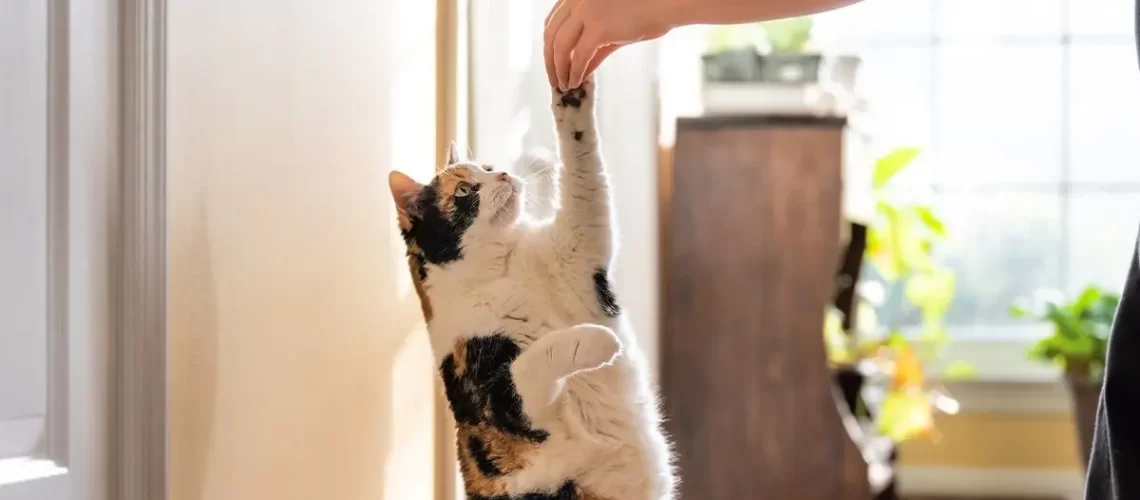Are you tired of your cat constantly invading your personal space? Do you wish there was a way to establish boundaries without resorting to harsh discipline? Look no further! In this article, we will explore gentle ways to set boundaries for your feline friend. By understanding and implementing these techniques, you can create a harmonious environment for both you and your cat. Not only will this help reduce stress and frustration, but it will also strengthen the bond between you and your furry companion. So, let's dive in and discover how to establish healthy boundaries with your cat while maintaining a loving relationship.
Key Takeaways:
- Establish a designated space for your cat where they can feel safe and secure.
- Use positive reinforcement techniques, such as treats or praise, to encourage desired behaviors.
- Provide appropriate scratching surfaces and toys to redirect your cat's natural instincts.
- Set consistent routines for feeding, playtime, and sleep to help your cat understand boundaries.
- Communicate with your cat through body language and vocal cues to establish clear boundaries.
Understanding Boundaries: Why They're Important for Cats
Boundaries are important for cats because they help them feel safe and secure in their environment. When cats have clear boundaries, they know what is expected of them and what areas are off-limits. This can prevent them from getting into trouble or causing damage to your home. Boundaries also help cats establish a routine and understand their place within the household hierarchy.
Cats are naturally curious animals, and without boundaries, they may wander into dangerous areas or get into situations that could harm them. By setting boundaries, you can protect your cat from potential hazards such as open windows, toxic plants, or access to harmful substances. Boundaries also help prevent conflicts between cats living in the same household by establishing territories and personal space.
Establishing Boundaries with Your Cat: Gentle Approaches
When it comes to establishing boundaries with your cat, it's important to take a gentle approach. Cats respond best to positive reinforcement rather than punishment. Instead of scolding or yelling at your cat when they cross a boundary, try redirecting their behavior to an appropriate area or providing an alternative activity.
You can use treats, toys, or praise to reward your cat when they respect the boundaries you've set. For example, if you want to keep your cat off the kitchen counter, provide them with a designated scratching post or elevated perch where they can observe the kitchen from a safe distance. Whenever your cat uses these designated areas instead of jumping on the counter, reward them with praise and a treat.
Gentle Communication: How to Set Boundaries with Your Cat
Setting boundaries with your cat involves clear communication through body language and vocal cues. Cats are highly attuned to non-verbal signals, so it's important to be consistent and clear in your communication. Use a firm but gentle tone of voice when giving commands or redirecting your cat's behavior.
Additionally, you can use visual cues such as pointing or gesturing to indicate boundaries. For example, if you want your cat to stay out of a certain room, stand at the doorway and point outside while saying "no" firmly. Over time, your cat will learn to associate that gesture with the boundary and understand that they are not allowed in that area.
The Importance of Providing a Space for Your Cat
Creating a designated space for your cat is crucial in establishing boundaries. Cats need their own territory where they can feel safe and secure. This space can be a specific room, a cozy bed, or even a scratching post with hiding spots. By providing this space, you give your cat an area where they can retreat to when they need some alone time or want to relax.
Make sure the designated space has all the essentials your cat needs, such as food, water, litter box, and toys. It should also be comfortable and quiet so that your cat can rest undisturbed. By giving your cat their own space, you are not only setting boundaries but also promoting their overall well-being.
Positive Reinforcement: Using Rewards to Teach Boundaries to Your Cat
Positive reinforcement is an effective method for teaching boundaries to your cat. When your cat respects a boundary or follows a desired behavior, reward them with treats or praise. This positive association helps reinforce the idea that respecting boundaries is rewarding.
You can also use clicker training as a form of positive reinforcement. Clicker training involves using a small handheld device that makes a clicking sound when pressed. Pair the clicker sound with treats whenever your cat follows a boundary or displays appropriate behavior. Eventually, your cat will associate the clicker sound with positive reinforcement and understand what is expected of them.
Recognizing Boundary Testing: Signs from Your Cat
Cats are known for testing boundaries, especially when they are curious or seeking attention. It's important to recognize the signs that your cat may be pushing the limits. Some common signs include scratching furniture, meowing excessively, jumping on countertops, or trying to enter restricted areas.
If you notice these behaviors, it's essential to address them calmly and redirect your cat's attention to an appropriate behavior or area. Remember to use positive reinforcement and reward your cat when they respect the boundaries. Consistency is key in teaching your cat about boundaries, so be patient and persistent in reinforcing the desired behaviors.
Calm and Gentle Solutions: Addressing Boundary Challenges with Your Cat
Addressing boundary challenges with your cat requires a calm and gentle approach. Instead of resorting to punishment or forceful methods, try using alternative solutions that redirect your cat's behavior. For example, if your cat scratches furniture despite having a designated scratching post, consider using a deterrent spray on the furniture or covering it temporarily with double-sided tape.
Additionally, providing mental stimulation through interactive toys or puzzle feeders can help distract your cat from challenging boundaries. By engaging their minds and satisfying their natural instincts, you can redirect their focus towards more appropriate activities.
In conclusion, setting boundaries for your cat is important for their safety and well-being. By using gentle methods like positive reinforcement and providing them with appropriate outlets for their energy, you can establish a harmonious relationship with your furry friend.
Should I set boundaries with my cat?
Absolutely! Thanks to these boundaries, they feel secure and understand what is expected of them. That is why it is important to establish limits right from the start and offer rewards to our cat for adhering to them. Many times, when we establish boundaries for our pet, we are primarily thinking about our own needs.
How do you discipline a cat without hurting them?
If your cat starts to bite or scratch while playing, it's important to stop giving them attention right away to communicate that the behavior is not desired. Additionally, you can redirect their attention by providing them with a toy or object that they are allowed to scratch, rather than your furniture.
What are cat boundaries?
Each cat has its own preferences and boundaries when it comes to being petted. While some cats are open to being touched by anyone and in any area, there are many others that have specific boundaries and only allow certain areas to be petted.
How do you redirect bad cat behavior?
Make sure your cat has enough toys and set aside time each day to play with them using a ball or crumpled paper for them to chase. Redirecting your cat's natural behaviors in appropriate locations and times is the most effective method to address these issues.
How do I change my cat's territory?
Help your cat form new positive associations by placing their toys, food, or bed near the area where they previously sprayed. Cats are naturally clean creatures and will refrain from spraying in areas where they engage in activities such as playing, eating, or sleeping.
Can my cat be territorial over me?
Cats typically display territorial aggression towards other cats, but they can also demonstrate it towards dogs and humans. This aggression may vary within a cat's own family, targeting certain members and not others, as well as towards specific cats. Cats establish their territory through activities such as patrolling, chin rubbing, and urine spraying.

















